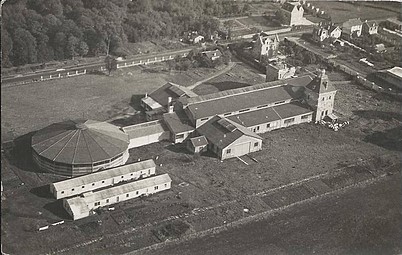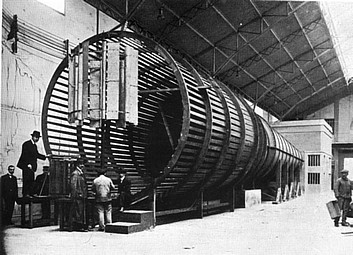The history of the IAT
The Institut aerotechnique was inaugurated on the 6th of July 1911. Its initial mission was to optimize the performance of aircrafts and find the best models for flight, which brought together representatives of different groups (the Cnam, the University of Paris, the Aéro-Club, the Automobile-Club of France) as well as prominent engineers of that time such as Louis Blériot, Gabriel Voisin and Gustave Eiffel.
To help in that endeavor, the facilities of the IAT used one of two experimental approaches of the time, which was the study of a moving model aircraft in still air.
In 1914, with the oncoming war, the first wind tunnel begins its manufacture, at that time the model airplane was to be studied while immobilized and the air around it aspired.
In 1916, the IAT was placed at the disposal of the Army under the supervision of Section Technique de l’aéronautique militaire (STAé) who finished the manufacture of the first wind tunnel (S1).
In March 1933, the IAT was attached to the Cnam.
In 1936, the second wind tunnel (S2) was built with the help of the STAé.
From 1945, the revival of the French aviation and the beginning of arming programs boost the manufacture of test facilities for the military then for the automobile industry in the sixties.
In 1960, the first supersonic wind tunnel (Sigma 4) was built.
In 1971, the second supersonic wind tunnel (Sigma 4b) was then built.
In 1972, the railway industry push for the manufacture of the wind tunnel (SVL) in order to increase the speed of their trains.
In 1973, the oil crisis leads car companies to study the aerodynamics of cars to reduce its energy consumption, which push for the manufacture of the wind tunnels S4, S6, S10 from 1976 to 1984.
Since 2006, the wind tunnels S1, S2, Sigma 4 and Sigma 4b are closed and are considered part of the legacy of the IAT.
In 2009, to popularize fluid mechanics and aerodynamics, the IAT built an educational wind tunnel Eiffel-style (SZ1).










